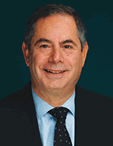
We develop every program at PHMC and our affiliates to serve a clearly identifiable need. At the same time, we understand that every population we serve faces a range of issues. The interplay of those challenges defines what that population requires of the public health infrastructure. By bringing multiple programs, research projects and public health approaches together under one organization, PHMC and its affiliates offer a unique ability to respond.
This issue of DIRECTIONS illustrates how our approach allows us to provide a broadly encompassing response even as we offer discretely focused, evidence-based services. Take a look at the road map to our services for youth—the focus group of this issue. You’ll find that more than 25 youth-oriented programs collectively allow us to address this critical population from birth through age 21. Why a roadmap? Because we understand that we must be smart and intentional about the directions we choose to take and how we navigate the intersections of our work.
These intersections emerge throughout the stories in this issue. The article on ChildLink reveals its role among tens of thousands of children and their families, the City of Philadelphia, homeless shelters and a range of service providers. The tobacco control work of our affiliate Health Promotion Council (HPC) helps deter stores from selling tobacco to underage customers even as it gives youth surveyors a valuable perspective on smoking, an understanding of the legal system, the responsibilities and benefits of employment, and an incentive to achieve academically. Joseph J.Peters Institute, also an affiliate, addresses sexual abuse through treatment to both victims and offenders, and it collaborates with PHMC’s substance abuse treatment programs to extend awareness and knowledge to parents in recovery. Through Philadelphia Urban Food and Fitness Alliance, HPC connects 50 area youth, numerous local organizations and efforts from across the country to help transform local food systems. Board member Margie Austin speaks of bringing together her background as a parent of a special needs child with governance of PHMC, data from across PHMC programs and the opportunity to influence the after school program experience for children with disabilities.
In each of these examples, we stand strategically at a key intersection to keep the traffic flowing and the interactions relevant to serving youth. We repeat this essential, dynamic role for every population we touch and we tease out and manage the still more complex intersections among those populations.
This is the value that PHMC brings daily—thanks to our employees, funders and other supporters—as a comprehensive public health institute.
Yours in public health,
![]()
Richard J. Cohen, PhD, FACHE
President and CEO of PHMC





